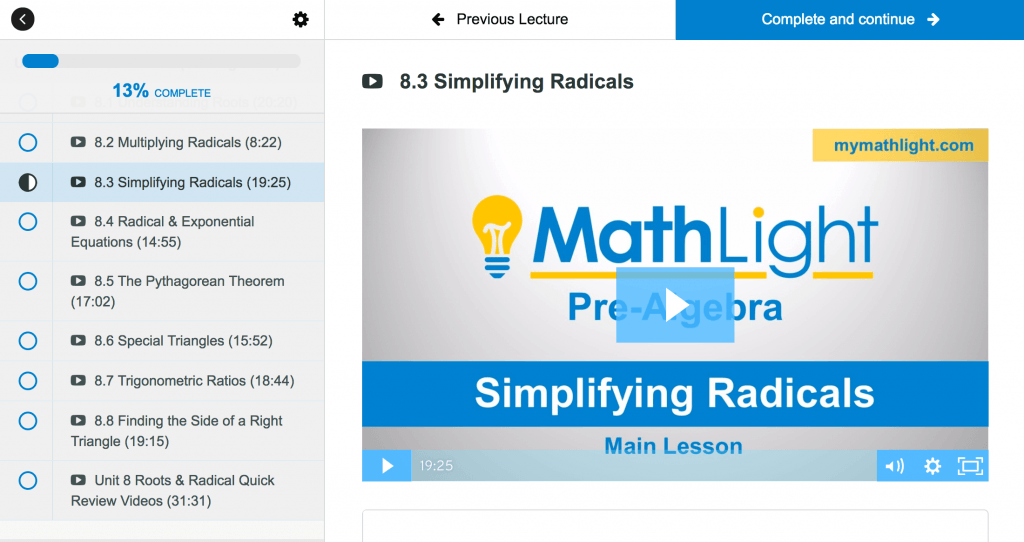52.
The class average for the last test was a 52.
You stare in horror at the computer screen wondering how this could possibly have happened!!

This is not good.
You explained. You reviewed. You reminded them 1,352 times to “for the love of all that is good, please study!!”
Apparently, they didn’t.
Your mind immediately looks for someone to blame (someone besides yourself, of course).
Ah – it’s the students’ fault. They weren’t paying attention. They didn’t care enough to ask questions. They weren’t really trying. And apparently they didn’t study.
And maybe they didn’t.
But what if more basic problem is at work here?
What if they didn’t understand your explanations?
What if they were so confused they didn’t even know what questions to ask? What if understanding this concept seemed like such an impossibility they just gave up and quit trying?
We teachers often commiserate about things we can’t control - like our students’ work ethics or how much they study. But that does no good. Instead, we must focus on what we can control.
And when students aren’t understanding our explanations, we can do something about that.
In fact, we must.

When Your Students Are Confused
1. Ask yourself how important the concept is.
If your students are struggling with a foundational concept that they must understand in order to succeed the rest of the year, then you must stop and make sure they understand it before moving on.
But if they’re stuck on a super-confusing concept that isn’t that crucial to their overall understanding of the subject, then it might not be worth spending more time on.
The key is to weigh the pros and cons. If you decide to stop and spend more time on one topic, by default you’re taking time away from other topics. Clearly worth it for a critical foundational concept. But for less critical concepts, it might be better to just cut or minimize them and move on.
When you’re not sure, always go back to what is best for the student – not necessarily what is best for their test scores. Do they truly need to know this? Or is something more important coming later in the year they need to know more?
2. Explain the concept again.
If your students are confused about an important topic, you cannot just simply move on and say “well, they have to figure it out.” You’ve got to go back and explain it again. As you do, make sure that you....
a. Assess understanding as you go. As you teach, look for clues that show you whether or not your students are understanding. Ask questions and call on students randomly (not just the ones with their hands up).
Notice if your students are smiling from “ah-ha” moments or furrowing their brows in confusion. When students are practicing what you’re doing, walk around and see if they’re doing it right.
Know in real time when they’re tracking with you and where they start to get lost. And then….
b. Stop and park whenever they start to get lost. When you start getting those confused looks, stop and slow way down. You lost them here before, so walk them through the concept carefully, keep checking for understanding, and don’t rush on until they’re nodding in understanding.
c. Connect the known to the unknown. Always connect what you’re trying to teach (the unknown) to what your students already know (the known). This provides context and helps them better understand the new concept. Use examples and illustrations when possible. Ask yourself “what is this like?” and then use that in your explanation.
d. Teach the concept, do it together, then have them do it on their own. If you’re teaching a skills subject like math, you cannot just work a problem and then say “okay, got it?” Instead, follow this simple order:
First, teach the concept. Lay out each step carefully. Don’t just throw up an example problem on the board.
Next, work problems together as a class. Ask your students lots of questions and help them think through the process as you think aloud together.
Finally, have them practice on their own. Walk around to answer questions and check for misunderstandings.
3. Find another way to explain it.
If you’ve tried re-teaching the concepts and they’re still as confused as ever, you need to find another way to explain it. If you can’t think of one, ask another teacher how they teach it. (If you don’t have someone at your school that you can ask, ask in our Facebook discussion group.)
You can also look for videos on YouTube to see how others explain the concept. But, please, don’t show your students random YouTube videos without first watching them first and ensuring they make the concept easier to understand and not more confusing. Because for every fantastic YouTube video, there’s about 3 doozies.
Looking for videos for your math classes?

We've partnered with MathLight to bring you awesome pre-algebra teaching videos - completely FREE!
4. Try whole brain teaching.
Break up the concept into super short (2-3 minute) mini-lessons. Teach each mini concept then stop & have your students explain it to each other. Not only does talking about the concept reinforce what they’re learning, but you can walk around and listen in on their thoughts to ensure they understand & spot any misconceptions.
5. Use another format.
Draw a picture, create a visual, model the idea with something hands-on, or use the students to act out an illustration. Sometimes seeing something (versus hearing it) is all the students need for the concept to click.
6. Build in time to walk around and answer questions.
Please don’t lecture from bell to bell, especially when you’re teaching important or complex topics. You need time when the students are working – whether individually or in groups – and you are walking around answering questions. This allows you to personalize your instruction and specifically address areas where students are confused.
As you get better and better at explaining concepts, you’ll enjoy more and more rewarding ah-ha moments. And your students will soon demonstrate deeper understanding – and even enjoy your class more.
But as your students’ understanding improves, if the test average is still a 52, the problem might be with your tests. You might be making some of these common mistakes that make tests confusing and skew the results.
Or, worse yet, our assessments might not be matching what you’re teaching in class – which is a super, duper, big, fantabulous problem.
Tests should always assess the most important skills – the ones that you’ve consistently taught and practiced in class. If they’re not, you either need to change the test or change what you’re teaching.
Then you can say adios to those horrible 52's.

What is tremendously sad to this 58 year old, I only had 2 teachers that stuck with me until I grasped the concept. Today I’ve spent thousands of dollars from supposed ‘teachers’ to learn software to try and make a living. None of those teachers at the end of my training cared if I got it or not. I was paying them by the hour and they taught by the hour they could care less if the concept was understood or not. I feel like a failure. I can’t find anyone who will guarantee to teach me until I understand it for a flat fee. So none of them really care that I’ve spent my whole life trying to get an education to specialize in something so I can make a living and feed my family. None of them care. Please teach that not everyone learns the same. Some people need more time and they need teachers to not give up on them, sadly the world doesn’t care. I get it, who can pay a teacher to teach a single concept to one student for 30 days when the other students get it in 5 minutes. What would you do if you were me?